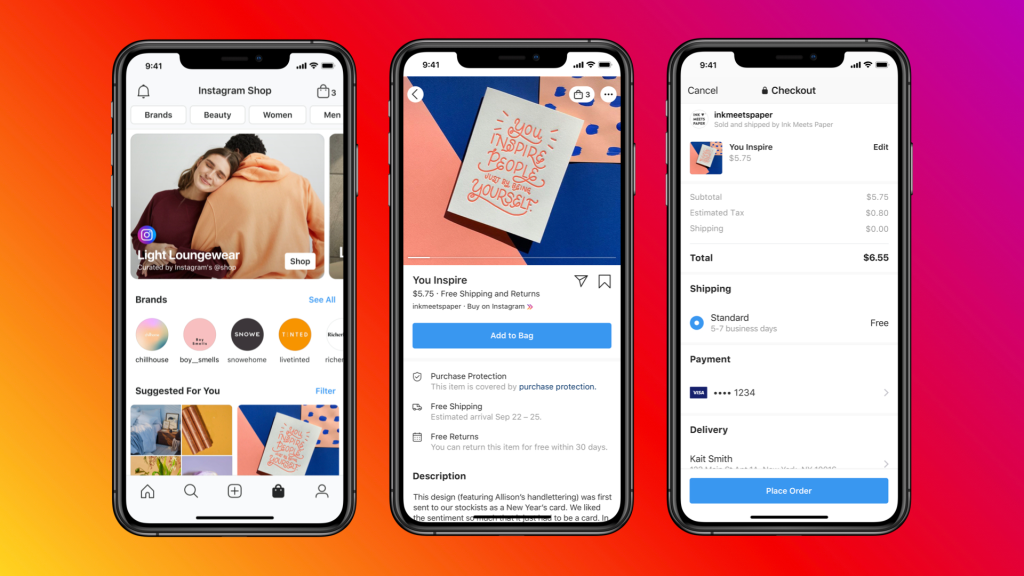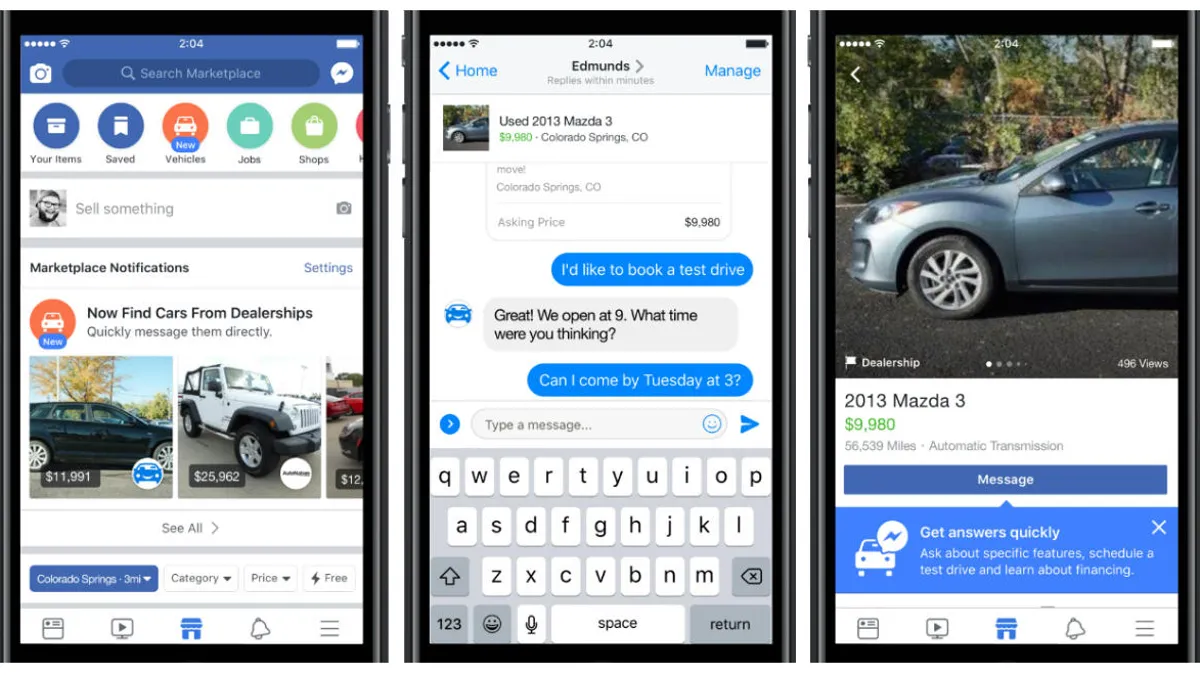22 July 2024 |
By - Sudha Mariappan

What’s Social Commerce and E-commerce?
There are mainly two channels where the digital revolution changed how businesses formerly reached out to consumers. E-commerce and social commerce, in which both involve sales of goods and services in an online setting but differ considerably in terms of approach and impact.
E-commerce is a way of doing online sales the traditional way. Here, the online store is set for displaying the products to the customers, who browse and choose what they want to buy with just one click. Think of some very popular platforms like Amazon, Flipkart, or your own stand-alone website. This model is all about laying out your products fully, with detailed descriptions of an easy payment gateway.
Social commerce is a relatively new concept, as it combines e-commerce with social media. Essentially, social commerce makes sure you have a smooth shopping experience within popularly used platforms like Instagram, Facebook, and TikTok. This leverages user-generated content, influencer marketing, and interactivity to drive sales.
Differences Between Social Commerce and E-Commerce:
While both have the aim to generate sales, they have some distinct differences. Let’s see how they serve us in different aspects:
- Platform: E-commerce runs in separate online stores, but social commerce takes place within social media platforms.
- Focus: E-commerce is focused on providing information about the product and ensuring a clear call to action. Social commerce focuses on engaging, creating community, and offering a delightful visual shopping experience.
- Customer Journey: The customer journey is minuscule in social commerce; the discovery and purchase can happen without the user ever leaving social. E-commerce tends to have a lot of customer research before the customer decides to buy.
- Marketing: Social commerce relies heavily on influencer marketing, UGC, and visual storytelling. E-commerce is driven by SEO, paid ads, and email marketing.
- Conversion Rates: Social commerce typically enjoys higher conversion rates mainly due to the impulsive shopping behaviour triggered when a purchase is made in the social media landscape. Though AOV might be lower compared to e-commerce.
- Customer Data: The accurate information or valuable insights into customer behaviour and preference are usually given by the social commerce platform. E-commerce platforms also offer data, but the nature of data collected can differ.
Why Social Commerce is Taking Over:

With all of us using social media as entertainment, gathering information, and socializing, no doubt it has become the most crucial part of our lives. Although we run to e-commerce for shopping, it has become more convenient for most of us to shop through social media. The e-commerce space is evolving so rapidly, with social commerce becoming an all-conquering solution.
The Rise of Mobile Shopping and Social Media:
The insane amount of smartphone usage has changed consumer behavior drastically. More and more time is being spent on social media platforms, which is a goldmine for businesses.
Social commerce has taken advantage of that by making shopping seamless within the social media experience. You can see products being displayed while you’re enjoying your scroll time. This ease is what gives consumers the capability to discover and purchase products on the go without having to change apps.
Recommendations from friends and family, or people of influence, are generally better trusted by consumers. Social commerce capitalizes on this psychological phenomenon by allowing users to uncover products through shared experiences and recommendations. Options for liking, sharing, and commenting create a phenomenon of social proof that can positively impact purchase decisions.
Visual Appeal is Important:
Social media platforms are visual in nature. High-quality images and videos are essential to capture attention and create desire. That's where social commerce does well because it gives businesses the opportunity to effectively represent their products in a visually appealing manner. It allows users to smoothly browse through images of products, watch demos of those products, and get inspired to make a purchase.
Direct-to-Consumer Focus:
The rise of direct-to-consumer brands has disrupted traditional models in retail. In its very nature, social commerce goes in line with this trend, offering a direct channel through which businesses could reach consumers. There are no intermediaries between companies and customers, it has strong relationship building, gives you valuable insights into their behavior, and provides you with personalized experiences.
Target the Younger Generation:
Social media platforms are largely used by a young demographic, which most businesses are chasing after. This demographic is digitally savvy, mobile-first, and influenced by social trends. Social commerce does an effective job of reaching the target market because it provides a kind of shopping experience attuned to their taste and habits.
Much Easier Payment and Checkout:
Integrated payments within social media made the process of buying much easier. Now, consumers can buy on click without entering their payment information over and over again. Higher conversion rates are guaranteed if you add this payment feature in your advertisements.
For example, all the social media apps, including WhatsApp, have a payment feature that can be linked to your bank account for easier payments.
A Shorter Customer Journey:
Social commerce often removes a few steps that exist in traditional e-commerce. Thus, most of the time, users will be in a position to discover, evaluate, and buy products within one platform. This type of reduced friction makes for more conversions. If the customer feels at ease, they will easily buy the product.
The combined effect of these factors brought social commerce into mainstream business and created a strong route for businesses to reach and engage with customers.
Knowing the key differences between e-commerce and social commerce will help you make permanent decisions on the type of business approach that may best suit you. While e-commerce provides a respectable platform to sell online, it is social commerce that presents exciting opportunities for engaging at a higher level with customers and generating growth.
Read Also: What are Paid Ads? How do paid ads drive conversions in digital marketing?
Top Social Commerce Platforms:
Instagram Shopping:

Instagram has morphed from an application that shares images to a hub of e-commerce activity. In many different ways, like Shoppable Posts, Stories, and even IGTV, you can see many products in front of you. The app hosts a variety of products from fashion, beauty, home, and lifestyle items.
For example, fashion brands use Instagram to leverage shopping for showcasing their brand collections and driving sales. Big brands such as Myntra and Flipkart use Instagram platforms to showcase their brands. Therefore, building a strong brand image and associating with the target audience is possible through effective visual content and collaboration with relevant brand personalities.
Facebook Marketplace:

Although it started its operations with classified ads, Facebook Marketplace has transcended to be a sales avenue for many businesses. This includes items such as electronics, furniture, and homewares. Facebook Marketplace is open to a large audience, but competition can be very fierce.
Companies readily outclass those of competitors if they ensure their product listings are crystal clear, the pictures are sharp, and the pricing is on par. Additionally, Facebook promotions will spread more knowledge among distantly spread target audiences.
Pinterest Shopping:

Visual discovery and planning website that people love, where boards are filled with images and ideas. Pinterest Shopping helps businesses show off products in shoppable pins, making discovery and buying easy. Really works for home decor, fashion, and food products in particular.
Businesses can get visibility at a much wider reach on Pinterest with beautiful pins and optimised descriptions. Another way would be to use influencers to help gather a larger audience for shoppable pins.
Making the Most of Social Commerce:
Building a Strong Social Media Presence:
A good social media presence supports the completion of profitable social shopping. If any brand wants to have a loyal and engaged community, it must provide good quality content continually, making sure that’s what the target audience desires. This can be done by knowing what they are interested in, what they like, and what their pain points are to provide information and entertainment in equal measure.
Not only this but active engagement goes past posting. Replying to comments, questions, and messages timely makes people become interested in the customers and thereby builds trust.
You can achieve a strong online presence by following these tactics:
- Join online relevant conversations: This could be a number of business-oriented forums or social media groups. Contributing to such topics will position your brand for expertise in your niche.
- Content Pillars: Clearly define themes or topics that align with your brand and audience interests.
- Visual storytelling: Capture their interest through engaging brand-related visuals such as high-quality images and videos accompanying brand messages.
- Consistency: Same posting frequency and visual identity on all networks.
Creation of Shoppable Content:

Social commerce has become a must-have, but the business needs to create compelling, consumable content that funnels right into a frictionless shopping experience. Use features like shoppable posts, stories, and reels to offer customers ease in foam of product discovery and buying. Product highlights include high-quality images and videos that clearly show the features and benefits of your products.
There’s a simple and effective way to get your brand shoppable and that is,
User-generated Content
You can make use of customer-generated content to add an air of authenticity and social proof to your shoppable posts.
When people look at UGC, it’ll create trust and urge them to buy your product.
Read Also: The authenticity age of User-Generated Content. Is it really word of mouth 2.0 in 2024?
Time-bound offers and promotions bring the element of urgency and exclusivity to limited-time deals or promotions, shopped in the form of content.
UGC Campaigns:
User Generated Content can urge your customers to share the ways they use your products, emphasising mutual authenticity. You can use the ability to enable UGC for the purposes of building trust, credibility, and social proof.
- UGC contests and campaigns: customer contests and sweepstakes eliciting photo submissions, review videos using a relevant hashtag.
- Influencer partnerships: Partner with influencers to create native and compelling content showing off how people use your products.
- Customer Reviews: Post your customers' positive feedback and reviews on social media.
Measuring Your Success:
You must set up KPIs and measure results to perform successful social commerce. Keep an eye on the metrics which are engagement rates, click-through rates, conversion rates, and ROI. This will tell you not only if a campaign is working, but if it is the right direction to be taking business decisions that drive business forward.
- Social media analytics: Leverage the native analytics tools provided by the social media platforms to understand the demographics, interests, and behaviors of your audience.
- A/B testing: See the content formats, timing, and promotion that resonate most with your audience.
- Customer feedback: Understand customer preferences and pain points from feedback collected through surveys or through social media listening.
Read Also: What is A/B Testing? How to Use A/B Testing to Improve Your Marketing Campaigns?
Conclusion: Social commerce changed the way businesses used to interact with consumers. That means getting an insight into unique characteristics of social media sites and implementing some effective strategies in an effort to develop this potential into sales and customer base building.
Having strong social presence and shoppable content that engages will get you far ahead of the competition and direct you towards long-term growth, only if these efforts are constantly measured and optimised.
Want to unlock the full potential of social commerce for your business? Contact us at info@ontogendigital.com. Let us help you build a custom strategy that takes you where you want to go. Subscribe to us for more such blogs.
KEY TAKEAWAYS:
- Social commerce is just a blend of e-commerce and social media, making it easier to shop directly in the environments of Instagram, Facebook, and TikTok.
- E-commerce is focused more on detailed product information and calls to action. In contrast, social commerce is about engagement, community building, and visual appeal.
- Social commerce benefits from higher conversion rates due to the fact that it hosts impulsive purchase behavior through influencer marketing, UGC, and integrated payment options.
- On the back of the rising mobile shopping and social media usage, social commerce has grown immensely to become one of the most influential tools in the hands of every consumer, more so the young and digitally savvy.
- With a strong presence in social media, one can generate purchasable content, run UGC campaigns, and track KPIs continuously to be assured of long-term growth through successful social commerce.